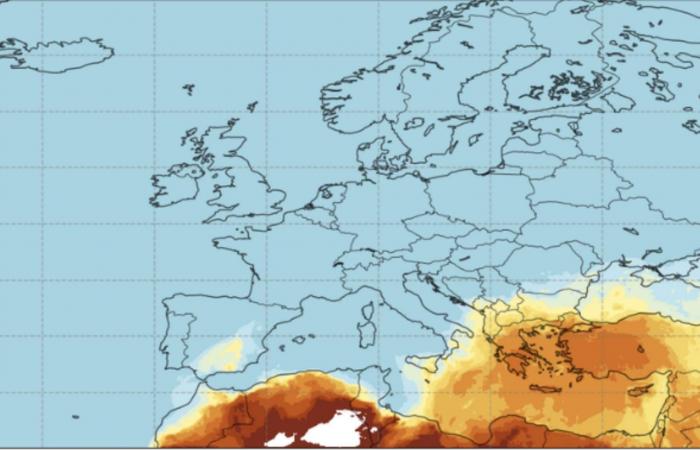L’Italywith Greece, Cyprus, Türkiye And Spainwas hit by another wave of Sahara dust after last weekend’s “yellow rain” in Northern Italy. According to data from the European center Copernicus Atmosphere Monitoring Service, dust from the world’s largest hot desert is reaching the eastern Mediterranean region, carried by the wind. According to forecasts, the intrusion of Saharan dust throughout the day today with an increase in levels of PM10 (fine particles smaller than 10 thousandths of a millimetre) up to 150-200 micrograms per cubic meter in Greece and Türkiye. This is four times above the daily limit set by the European Union guidelines for this type of fine dust.
It is not at all strange that Sahara dust reaches Europe, and indeed it is a rather common phenomenon especially in the south of the continent, which sometimes dyes the sky yellow or colors the rain red. Let’s first clarify that in these cases it is improper to talk about “sand”, as we often read around, but it is more correct to talk about “dust”. Sand is made up of particles with dimensions ranging between approximately 0.1 millimeters and 2 millimetres, while the material that falls with the rain is much finer: we speak of particles around 20 thousandths of a millimetre or less, so technically dust. Larger material is too heavy to remain suspended for long, while dust can travel thousands of kilometers, thus managing to complete the journey over the Mediterranean carried by the wind.
But why does this dust arrive in Italy and in Europe in general? To put it very simply, two conditions are generally needed for this phenomenon to occur: low pressure in the North Atlantic Ocean e high pressure in the central-eastern Mediterranean or south-eastern Europe. The currents then proceed counterclockwise from high to low pressure, thus passing over the North African desert collecting sand and dust. In the event of disturbances arriving from the Atlantic, therefore in the opposite direction, this circulation slows down and therefore has more time to collect material which will then return to the ground in European territory thanks to precipitation.
The climate change is making this phenomenon more and more frequent, making it happen even in periods of the year (like winter) when it was much rarer. In fact, global warming is causing the tropical belt to extend further and further north, bringing the northern reaches of theAfrican subtropical anticyclone (i.e. the high pressure typical of North Africa) increasingly in the Mediterranean. Furthermore, it favors the warming of Mediterranean waters, increasing the probability of precipitation capable of discharging Saharan dust to the ground.






